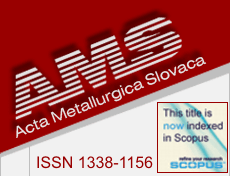 |
Visits: 85315768
AMS now reading: 1
|
|
|
|
|
 |
|
|
| Sojka J., Váňová P., Jonšta P., Rytířová L., Jerome M. |
| ROLE OF TESTING CONDITIONS IN SULPHIDE STRESS CRACKING OF X52 AND X60 API STEELS |
Abstract
Resistance of X52 and X60 API steels to sulphide stress cracking was tested by means of tensile tests at a constant load below the yield strength in accordance to NACE standard TM 0177 and also by means of slow strain rate tensile tests. Both steels were tested in two different states, after hot rolling and after laboratory water quenching and high temperature tempering at 600 °C. The results showed that steel resistance to sulphide stress cracking depended strongly on the microstructure but only when tests at the constant load were performed. In this case, quenching and tempering increased steel resistance to sulphide stress cracking considerably, in a similar way as in the case of hydrogen induced cracking. The results of slow strain rate tensile tests were different: they were similar regardless of the heat treatment. On the other hand, degree of degradation depended strongly on specimen orientation. Degradation of steel properties was much more pronounced for tests performed in through thickness orientation of tensile specimens while it was less pronounced for tests performed in longitudinal or transversal orientation of tensile specimens. Non-metallic inclusions seemed to play an important role as crack initiation sites during slow strain rate tensile tests. For tests performed in longitudinal or transversal direction cracks initiated on globular oxides predominantly while in through thickness orientation cracks initiated on elongated manganese sulphides only. This behaviour could be related to geometric characteristics of different kinds of non-metallic inclusions. Manganese sulphides seem to be rather harmless inclusions for specimens in longitudinal or transversal directions thanks to their low thickness. They become very noxious for specimens taken in through thickness direction because of their high area and sharpness.
|
| Keywords: API steel|sulphide stress cracking|slow strain rate test|microstructure| |
| No 4 (2006), p. 462-468 |
|
|
|
|
|
|
|